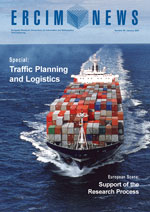by Günter Koch
As competition for research funds becomes tougher, professional management of science and R&D plays an increasingly crucial role.
In the past, the typical profile of leaders in research was that they had to qualify as scientists following the specific career rules of the community, and perhaps also had talent or intuition to effectively manage intellectual teams or organisations. Good management means a) providing conditions that enable employees to fully develop and demonstrate their potential, and b) preparing decisions and having them implemented. In recent years it has become evident that academic institutions, specifically in the Anglo-American world, can benefit from management potential developed in business environments. The constitutions of modern universities (eg as expressed in the Austrian University Law of 2002) even explicitly foresee the mandate for employees with backgrounds other than science or research (ie business and management) to take leading roles.
Nevertheless, there are some remarkable differences between companies and educational or research organisations. The most evident is that companies are usually devoted to making profits in monetary terms, whereas the 'currency' of the science community is the scientific publication. Digging deeper into this subject, it turns out that there are many more indicators than simply profit, by which an educational or research organisation should be measured. These include the satisfaction and intellectual productivity of employees, the culture of the organisation, involvement in networks, the existence of quality management, and the 'production' of academics for a society. All these metrics contribute to the quality, and in the end, to the excellence and profile of a research institution. This is usually reflected by rankings (eg of universities), which have become popular and influential over the last decade.

In the 1990s, the idea that an organisation may be characterized not only by economic performance but also by its potential in knowledge and know-how was demonstrated by the definition of the role of Chief Knowledge Officer (CKO), first installed at the Scandinavian insurance company Skandia in 1994. This idea, combined with quality models taken over from Software Process Quality & Maturity as reflected in standards such as ISO 15504/SPICE, was taken up by R&D managers everywhere. The trend was also observed in a majority of large organisations in applied research, such as the ERCIM members VTT, Fraunhofer, SINTEF and ARC, all of which are assembled in the European Association of Research & Technology Organisations (EARTO).

As requested by the European Commission, they constituted a 'high-level expert group', which recently came up with the RICARDIS report (see Figure 1). In substance, this report is a compendium of methods for managing research- and knowledge-based organisations, both public and private. (As the case of Austria proves, even universities have accepted such methods of professional knowledge management and now issue an annual 'intellectual capital report').
Figure 2 illustrates the important aspects of management in an R&D organisation. This reference model combines all the relevant dimensions of a knowledge organisation in one framework and, at least in the German-speaking countries, has become a kind of standard. In Germany, the government is promoting intellectual capital reporting in order to motivate knowledge-based companies to advertise their potential and to make knowledge management a strategic objective.
The ultimate goals of such a 'Knowledge = R&D Management' framework are to raise the quality of R&D management, and to put R&D organisations in a position to become 'benchmarkable' by their own criteria, rather than by rankings imposed on them from the outside.
It is estimated that already around 500 organisations in Europe apply intellectual capital reporting and the associated management methods. There are indications that the EC will soon extend the existing EU standard in financial reporting (IFRS) through a directive asking for additional information on the ability of an organisation to produce, aggregate and exploit knowledge generated from R&D.
In 2006, ERCIM's Board of Directors decided for the first time to provide an intellectual capital report as an addendum to its Annual Report, to be issued in 2007.
Link:
RICARDIS report:
http://ec.europa.eu/invest-in-research/pdf/download_en/2006-2977_web1.pdf

Please contact:
Günter Koch, execupery @ TechGate / AARIT, Austria
E-mail: koch![]() execupery.com
execupery.com










